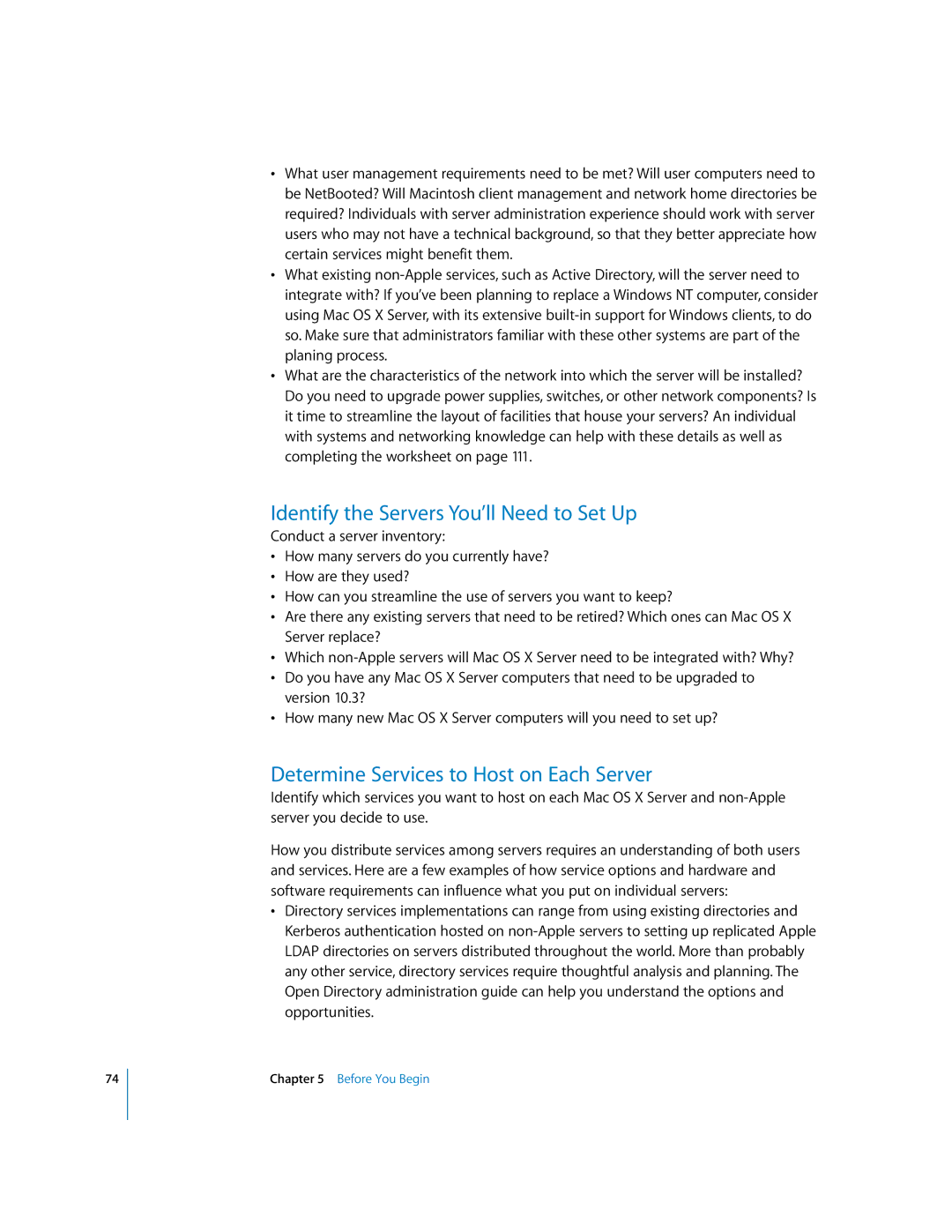
74
•What user management requirements need to be met? Will user computers need to be NetBooted? Will Macintosh client management and network home directories be required? Individuals with server administration experience should work with server users who may not have a technical background, so that they better appreciate how certain services might benefit them.
•What existing
•What are the characteristics of the network into which the server will be installed? Do you need to upgrade power supplies, switches, or other network components? Is it time to streamline the layout of facilities that house your servers? An individual with systems and networking knowledge can help with these details as well as completing the worksheet on page 111.
Identify the Servers You’ll Need to Set Up
Conduct a server inventory:
•How many servers do you currently have?
•How are they used?
•How can you streamline the use of servers you want to keep?
•Are there any existing servers that need to be retired? Which ones can Mac OS X Server replace?
•Which
•Do you have any Mac OS X Server computers that need to be upgraded to version 10.3?
•How many new Mac OS X Server computers will you need to set up?
Determine Services to Host on Each Server
Identify which services you want to host on each Mac OS X Server and
How you distribute services among servers requires an understanding of both users and services. Here are a few examples of how service options and hardware and software requirements can influence what you put on individual servers:
•Directory services implementations can range from using existing directories and Kerberos authentication hosted on
Chapter 5 Before You Begin
